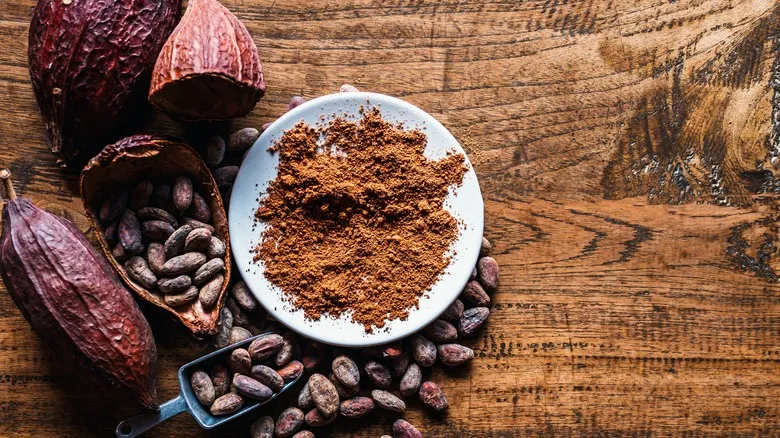Other types of cocoa powder and when to use them

Not all cocoa powder undergoes alkali treatment. Natural cocoa powder maintains the acidity of the cacao bean, resulting in a lower pH and a more pronounced flavor. It is the most commonly found type of cocoa powder, particularly in the United States, and most recipes that specify cocoa powder typically refer to the natural variety. Due to its acidity, natural cocoa powder can be paired with baking soda, an alkali, as a leavening agent. The interaction between cocoa powder and baking soda generates carbon dioxide, which helps baked goods rise.
Alkalized cocoa powders are known as Dutched or Dutch-process cocoa powders, named after their creator, Dutch chocolatier Coenraad van Houten. Black cocoa is a form of ultra-Dutched cocoa powder, while most Dutch-process cocoas have a neutral pH of 7 and a dark brown hue that falls between natural and black cocoa powders. Dutched cocoa offers a milder, earthier flavor compared to natural cocoa, yet it still possesses a chocolatey essence that black cocoa lacks. Since Dutch-process cocoa powder is not acidic, recipes using it require baking powder (understanding the distinction between baking soda and baking powder is important for substitutions).
Given that all three types of cocoa powder have unique flavors and chemical characteristics, they should not be used interchangeably in recipes without considering their differences. However, both Dutched and natural cocoa powder can be utilized in a wide range of baking and even savory dishes—ultimately, it comes down to your flavor preference.
Recommended

The Science Behind What Makes Instant Noodles Instant

How To Identify Lab-Grown Chicken When It Finally Hits Grocery Store Shelves

Should You Store Bananas In The Fridge Or At Room Temperature?

Here's Why Your Brussels Sprouts Taste So Bitter
Next up

